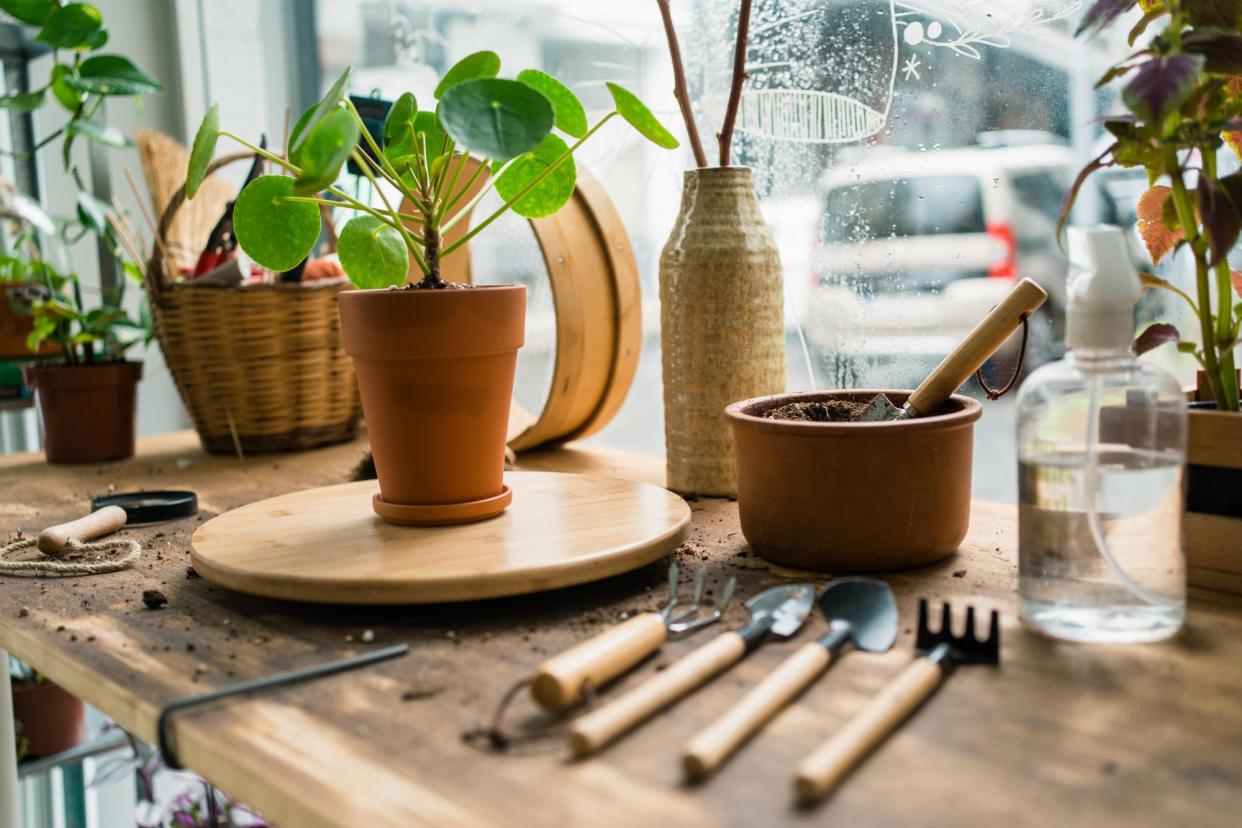Houseplants aren’t really meant for inside, so give them some attention

There was a time when my houseplants got the best of me. Devoted care, weekend afternoons dedicated to careful propagation, gentle misting, regular watering. I’d carefully snip the brown bits off the edges of their leaves and delicately remove the buildup of dust with a microfibre cloth. My flat was a growing cornucopia of cacti and vines and succulents, all in a coterie of artisanal pots.
But that was in 2014, when I lived in a flat that was bleached with daylight and I had very few demands on my time. A decade on and the houseplant trend has ballooned (thank you, lockdown) but my tolerance and time for them has shrunk considerably.
This is the time of year plants need the most attention. They’ve survived the winter and deserve some TLC
The #houseplantgang that bedecked my G-Plan sideboard broke up with an old relationship. I’ve since moved several times and had a baby. Now my “collection” consists of Christopher Figgins, the name I gave my fiddle leaf fig tree (Ficus lyrata), a profligate spider plant (Chlorophytum comosum) called Donna, a fancy blue star fern (Phlebodium aureum) named after Fenella Fielding, and an extremely tolerant rubber plant (Ficus elastica).
This is the time of year they’ll get the most attention. They’ve survived another winter of drying central heating and slow growth without attracting an infestation of fungus gnats (awful, if harmless – nematodes will keep them at bay but so will putting your plants outside somewhere sheltered) and deserve some TLC.
Related: It’s time to spring into action: Alys Fowler on the jobs to do in your garden right now
Most of our houseplants are meant to grow outdoors in much warmer climes, but if we keep them captive in pots on windowsills there are some things that can make it more pleasant for them.
Now that the days are longer, these plants will be getting the hours of light they need, which means they’re likely to put on growth. This can be ushered along by repotting plants that have outgrown their existing containers. Check to see if roots are growing out of the drainage holes of the pot, or stems are pushing up against its edges. Find a pot that is about a finger’s width larger in circumference – if you put a plant into a new pot that is too large, the fresh soil will soak up moisture, increasing the risk of root rot. Water the plant well before you lift and move it into its new pot, fill in the gap with peat-free compost (multipurpose or houseplant-specific), and water it again once it is in. Make sure you leave the pot to drain off somewhere – I use the kitchen sink.
Fresh compost will fuel the new season’s growth for a few weeks but applying liquid plant food – I use an organic seaweed feed – after you’ve watered every couple of weeks will keep it going. Keep an eye on your watering; growing plants will probably be thirstier.


